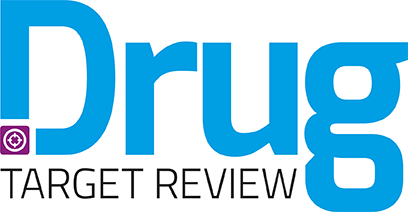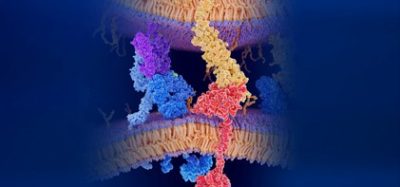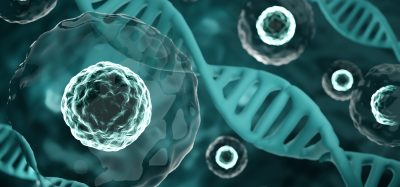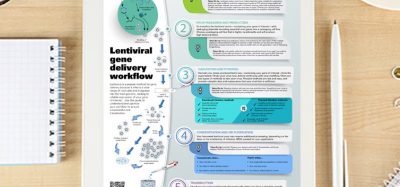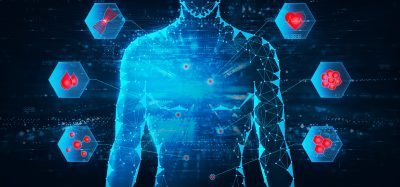New cell therapy model accelerates cancer treatment development
Posted: 10 February 2025 | Drug Target Review | No comments yet
CTMC, a joint venture between Resilience + MD Anderson Cancer Center, is transforming cancer treatment with faster, more efficient cell therapy development – learn how they’re doing it.
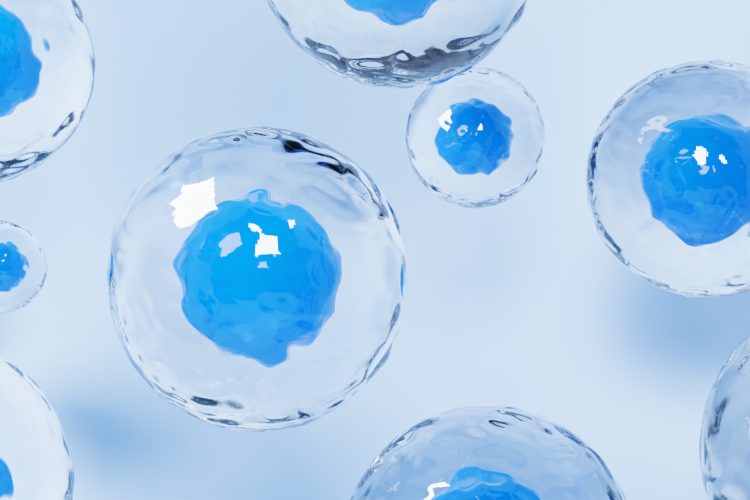

In the rapidly advancing field of cell therapies, Dr Jason Bock has emerged as a leader, known for his innovative approach to optimising the development process. With over 25 years of experience in therapeutics, Bock has played a pivotal role in shaping the future of cell therapies, particularly through his work at CTMC. In a recent conversation, he shared his vision for transforming the development and commercialisation of novel cell therapies, focusing on cutting-edge approaches like tumour infiltrating lymphocytes (TILs) and the strategic integration of manufacturing with clinical facilities.
A CEO of CTMC, Bock oversees the development and manufacturing of a diverse range of cancer cell therapies, including CAR-T, TILs and natural killer cells. By partnering with biotech companies – primarily startups – Bock and CTMC’s team of scientists and associates accelerate the scaling of these therapies. In just two years, CTMC has advanced eight therapies into clinical trials, harnessing genetic engineering to enhance T-cell effectiveness in the fight against cancer.
A unique model for cell therapy development
Bock’s extensive career in therapeutics development brought him to MD Anderson Cancer Center, where he identified a unique opportunity to streamline cell therapy development. His approach focused on integrating key components of the process: research, clinical, regulatory, and manufacturing into a cohesive, unified system.
“I’ve been involved in therapeutics development for over 25 years, working with small, medium, and large biotech companies. My focus has always been on advancing novel medicines from research to clinical development. Over the years, I’ve had the privilege of working on more than 25 different products,” Bock shared. His experience has played a key role in shaping a more capital-efficient model for bringing cell therapies to market.
We believed the missing piece was essentially an internal biotech at MD Anderson – one that could collaborate with researchers to industrialise their processes for cell therapies.
Around 2020, Bock assumed the challenge of creating a new division at MD Anderson focused on advancing cell therapies by bridging the gap between research labs and the clinic. He described the initiative as vital for ensuring that therapies move efficiently from the lab bench to the bedside. “We believed the missing piece was essentially an internal biotech at MD Anderson – one that could collaborate with researchers to industrialise their processes for cell therapies, manage regulatory interactions, and then manufacture those products for clinical studies,” Bock explained.
CTMC: a hub for cancer cell therapies
By collaborating with biotech companies, CTMC accelerates the manufacturing and scaling of innovative cancer therapies. This unique partnership model grants biotech firms access to CTMC’s cutting-edge infrastructure and clinical expertise, streamlining the development process. Bock highlighted ongoing efforts to enhance the effectiveness of cell therapies through advanced genetic engineering to make T cells more effective in the fight against cancer. “We utilise several different platforms, including lentiviruses and retroviruses for viral engineering, as well as CRISPR editing to remove certain genes,” Bock explained.
He further elaborated on the complexities of emerging technologies in the field. “While there’s always excitement about next-generation technologies, including non-viral gene editing, I think one common phenomenon, especially in biotech, is that we tend to underestimate the challenges of implementing new technologies. This includes technological and regulatory complexities, which is critical to understand.” Bock continued, “We are exploring some of these next-generation technologies, but our primary focus is on improving viral gene editing as much as possible – by increasing transduction efficiency, enhancing expression, and reducing viral copy numbers.”
The circular supply chain
One of the core innovations in Bock’s model is the concept of a ‘circular supply chain’ for autologous cell therapies. Unlike traditional drug manufacturing, where the supply chain is linear, autologous cell therapies involve a more complex, circular process. This involves starting with patient-specific material, manufacturing the therapy and then returning it to the same patient.
We bring that patient’s sample, whether it’s from their blood or, in the case of TILs, from a tumour, into the manufacturing facility, produce the product in as short amount of time as possible – days to weeks – and then return that to the same patient.
“We bring that patient’s sample, whether it’s from their blood or, in the case of TILs, from a tumour, into the manufacturing facility, produce the product in as short amount of time as possible – days to weeks – and then return that to the same patient,” Bock explained.
This circular process presents unique challenges, but the model Bock has developed at CTMC is tailored to overcome these hurdles efficiently. By integrating process and analytical development, regulatory management, manufacturing and clinical activities into one interface, CTMC can offer biotech companies a streamlined path to clinical proof of concept.
Bock explained that the supply chain for clinical trials typically follows a linear model for traditional therapies, where manufacturing is separate from the clinic. In this model, once a product is produced and delivered to the clinical pharmacy, the clinical team takes over the trial with little to no interaction with the manufacturing team.
TILs: a promising therapy
In the field of cell therapies, TILs are known for their potential to treat solid tumours, which account for 90 percent of all cancers. While therapies like CAR-T have shown great success in hematologic malignancies, solid tumours remain a challenging area for current treatments. Bock is enthusiastic about the promise of TILs, particularly with recent advancements in genetic engineering.
“TILs were specifically developed to target solid tumour cancers,” Bock explained. “The process involves extracting lymphocytes from the tumour itself, expanding them, and then using these lymphocytes as a treatment. Genetically engineered TILs open entirely new possibilities for improving both safety and efficacy. The specificity of the treatment for the cancer is already inherent in these lymphocytes. They are naturally enriched with tumour-specificity because they are derived from the tumour itself.”
Tailoring therapies to individual patients
Cell therapies are inherently personalised, as they are derived from the patient’s own cells. This personalisation is one of the key advantages of cell therapies. However, with this personalisation comes the challenge of reducing turnaround times and ensuring that therapies are produced in a timely manner. Bock emphasised the importance of digital infrastructure in ensuring that the right therapy reaches the right patient without mix-ups – an issue that has never occurred in CTMC’s two and half years of operation.
Overcoming challenges in clinical trials
One of the major challenges in cell therapy development lies in navigating the complexities of clinical trials, particularly for autologous therapies where patient-specific factors complicate both manufacturing and logistics. Bock explained how the CTMC model addresses this challenge by integrating industrial manufacturing capacity directly alongside clinical facilities, allowing biotech companies to focus on their science without being burdened by logistical concerns.
“We coordinate all these aspects for the company, enabling them to stay focused on their science and strategy. This significantly saves time and resources, leading to a more efficient use of capital,” Bock explained.
What makes CTMC unique
What sets CTMC apart is its unique ecosystem that integrates patients, scientists, manufacturing technologies, and physicians in a single space. This proximity fosters an efficient and collaborative environment where all the necessary resources are readily available. This interconnected environment creates a seamless, robust, flexible model for manufacturing cell therapies, especially when scaling up and accelerating production. Biotech companies can ‘bolt onto’ CTMC’s existing resources and gain access to patient populations, which is a game-changer in the race to bring new cancer therapies to market.
Scaling and global expansion
The concept we’ve developed of having an industrial cell therapy manufacturing facility located next to major patient centres like MD Anderson and the Texas Medical Center is a key innovation.
Looking ahead, Bock sees a tremendous opportunity to scale the model of patient-adjacent manufacturing. He believes that the concept of integrating cell therapy manufacturing with large medical centres like MD Anderson can be replicated across the globe.
“The concept we’ve developed of having an industrial cell therapy manufacturing facility located next to major patient centres like MD Anderson and the Texas Medical Center is a key innovation. This relationship between the manufacturing facility and the clinic is crucial, especially given the unique structure of the supply chain.” Bock is optimistic that this model will be implemented globally, revolutionising the way cell therapies are developed and commercialised. Globalization of this model will increase access to patients worldwide.
A bright future for cell therapies
As the field of cell therapy continues to evolve, Bock’s innovative approach to development, manufacturing, and clinical collaboration is paving the way for a more efficient and effective process. With a focus on personalised treatments, cutting-edge genetic engineering and scalable models, the future of cell therapies looks promising, offering hope for patients with solid tumours and beyond.
Meet Dr Jason Bock


Jason Bock, PhD, co-founder and CEO of CTMC, a joint venture between Resilience and MD Anderson Cancer Center, is a distinguished leader with over 20 years of experience in innovative biologics development and commercialisation. Based in Houston, TX, CTMC was established to accelerate patient access to impactful cell therapies by bridging cell therapy development and manufacturing with MD Anderson’s clinical trial capabilities. Dr. Bock has previously held leadership roles at MD Anderson, Teva Pharmaceuticals, CoGenesys, and Human Genome Sciences. He earned a BSc in Biology from the Massachusetts Institute of Technology and a PhD in Molecular and Cellular Physiology from the Stanford University School of Medicine.
Related topics
Cell Therapy, Genetic Analysis, Genome Editing, Oncology, Translational Science
Related organisations
CTMC (Cell Therapy Manufacturing Center), MD Anderson Cancer Center, Texas Medical Center
Related people
Dr. Jason Bock
